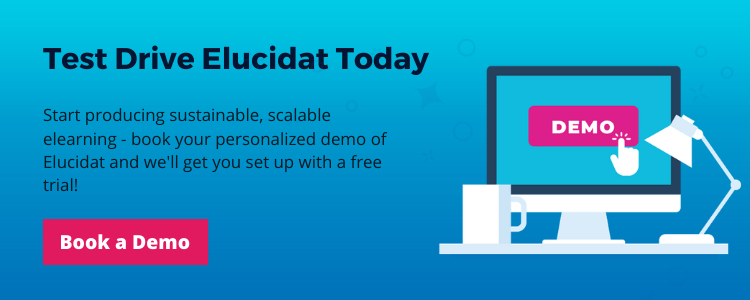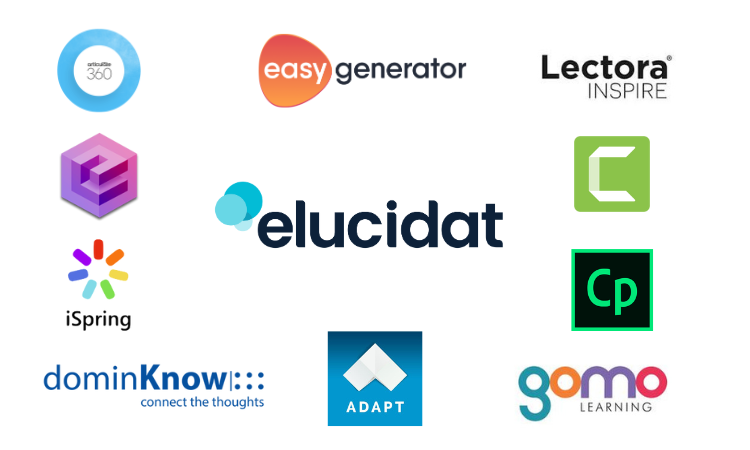Alternatives to LMS: what, when and why?
6 minute read
The learning management system, or LMS, used to be an integral part of most organizations’ learning ecosystem, and for good reason. But times change, business needs and user expectations change, and of course, technology changes too. The traditional solution is no longer the default answer in all situations, so let’s explore the LMS alternatives now available.

When and why should you consider LMS alternatives?
Just to be clear: this is not an ‘LMS is dead’ article: learning management systems have their place. If you need to host and track elearning courses alongside other non-digital employee training programs, and need the administrative functions too, then an LMS may well still be the answer. The Fosway report on Learning Systems from January 2019 makes interesting reading on this:
“Despite the backlash, the traditional LMS is not dead and compliance is still a core driver. Despite the broader shift to learner engagement, the demand for better management of learning including gold-plated compliance, continues to be a core driver for many learning system projects. For all the talk of the death of LMS, our research shows that less than 1% of buyers believe they will be able to turn off their LMS, even if they want to! But whilst compliance continues to be a core driver, it is also changing. There is a shift from compliance meaning attendance/completion, to compliance meaning competence. This changes both tracking and reporting significantly, shifting away from the course and into the workplace.”
| An LMS… | You want or need… |
|---|---|
|
|
The truth is, these days there is a lot more to online learning than neatly-packaged, SCORM-compliant elearning courses that we send users a link to and then mark as completed once done. Here are some reasons why an LMS alternative could suit your learning ecosystem better.
What are the alternatives to LMS?
There’s no one-size-fits-all solution, but these are some of the LMS alternatives available and some considerations to keep in mind.
- A low-end LMS (like the LearnDash WordPress add-on) could work well for smaller organizations that want to host courses and get some basic tracking.
- Elearning portals, built using something like SharePoint, can curate resources and content (including modules built-in authoring tools) into one place, and often can draw on useful features like forums and tracking.
- Virtual learning environments (VLEs) tend to be used in the education sector but their focus on learner collaboration above performance tracking could work in other instances – graduate or induction programs, for example.
- Fosway identified next-generation learning environments (NGLEs) as a recent disruptor to the market. These tend to facilitate things like social learning, video and microlearning and generally are more focused on the user experience than traditional LMS products.
- If employees already regularly use your intranet and it’s part of their workflow, you could capitalize on this and build learning experiences as microsites.
A learning record store (LRS – there’s no shortage of acronyms in this business!) is another option, using xAPI to receive data from any number of unconnected learning solutions. This becomes the central repository for storing and analyzing learning activity.
An important question: what data do you really need to track?
It’s worth noting this observation from Fosway: “L&D doesn’t invest much in analytics compared to HR – it is inward looking not business focused when it comes to measuring impact. Good data and analytics are essential for good decision-making and proving you make a difference.”
Don’t focus on tracking completion rates or session durations if those aren’t the metrics that actually matter. In some cases (like BP’s online induction program, described here by Nick Shackleton-Jones), unique visitor numbers or page views might be relevant and impactful, and those can be provided by (for example) Google Analytics, without need for an LMS.
5 reasons you should use an authoring tool alongside your LMS
If you’re not ready to part ways with your LMS and are looking to really maximize the performance impact of your training, it may be worth considering using an LMS and authoring tool together. Here are just some of the key benefits of doing so:
1. Make it engaging
Great content is the lynchpin to a good learner experience. What engages the learner isn’t how they access content on the LMS. It’s the interaction they have with the content.
The interaction needs to be timely, relevant and – most importantly – help them get their job done. Simply converting a PowerPoint presentation to be SCORM compliant won’t keep your employee’s attention. From a well-placed question to branching scenarios, using an authoring tool to produce engaging content is vital for learning retention and performance improvement.
2. Get efficient
An authoring tool allows you to quickly and easily create online training. It cuts out the time-consuming process of engaging with busy developers or expensive agencies to produce content for your LMS.
Of course, it’s not just about doing things faster. It’s about optimizing the development process while maintaining quality. Pre-populated learning templates mean you don’t have to worry about coding. With an authoring tool, you can focus on your area of expertise – the learning content.
3. Crowdsource your elearning
You and your team are the center of excellence for L&D at your organization. But you can easily become a bottleneck as you try to keep on top of all your LMS content.
Instead, you need to enable people across the business to start producing elearning. A cloud-based authoring tool empowers you to crowdsource your elearning from hundreds of colleagues and subject matter experts. Everyone builds and reviews in one place. Multiple people work on the same project at the same time. And with a range of permissions, you stay in control.
4. Manage on a global scale
Using an enterprise-wide authoring tool allows you to unlock production at an unprecedented scale. From wireframing early content drafts to quality assurance and user testing before delivery, you can drive efficiencies across multiple workflows.
To capture your global audience’s attention and drive their performance, your elearning needs to be overtly relevant. With many authoring tools you can clone your course. This means personalization for different roles, localization for regions, and translation to different languages is simple.
Keeping a master course helps you avoid version control issues. Need to make an update? Some authoring tools enable you to quickly and easily make changes and roll them out across different versions.
5. Saving costs
Your business isn’t static. So, even if you’re currently happy with your LMS content, you’ll need to add and update it over time. Using an authoring tool, rather than other methods of content creation, can be a huge cost saver.
Just one elearning course produced by an agency can cost you the same as a year’s authoring tool license (and sometimes far more). At a fraction of the cost of an LMS, break down the cost of an authoring tool license per head to really see the cost impact. For example, Benefit Cosmetics realized an estimated 69% saving of the costs of an LMS by using Elucidat to create and deliver their global learning content.
In summary…
The LMS landscape is changing! There are more ways than ever to deliver online courses and learning experiences, and a growing range of alternatives to LMS. Questions around your audience, the resources available to you, and the data you need will all inform the choice you make.
Find out more about Elucidat
We’d love to show you how Elucidat could transform learning management in your organization – contact us to book a demo.




